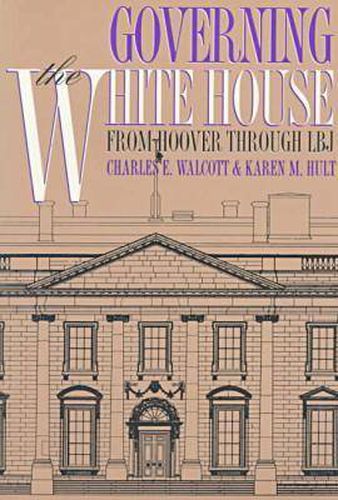Readings Newsletter
Become a Readings Member to make your shopping experience even easier.
Sign in or sign up for free!
You’re not far away from qualifying for FREE standard shipping within Australia
You’ve qualified for FREE standard shipping within Australia
The cart is loading…






Charles Walcott and Karen Hult maintain that the organization of the White House influences presidential performance much more than commonly thought and that organization theory is an essential tool for understanding that influence. Their book offers the first systematic application of organizational governance theory to the structures and operations of the White House Office. Using organizational theory to analyze what at times has been a rather ad hoc and disorganized office might seem quixotic. After all, the White House Office exists within a turbulent political environment that encourages expedient decision-making. And every four to eight years it must be reinvented by presidents who have their own theories and preferences about how to organize a staff to serve their policy needs.
But Walcott and Hult argue that White House staffs are not simply puppets of presidential preference and style. Yes, staff structures evolve primarily from presidents’ strategic responses to external demands. But those structures in turn significantly influence how the executive branch perceives and responds to further demands.
The first part of their book lays out the theoretical argument. The second examines White House outreach: congressional liaison, press relations, personnel selection, executive branch oversight, and interest group and intergovernmental liaison. The third focuses on White House handling of policy development and implementation. The fourth analyzes staff structures that facilitate the operation of the presidency itself: presidential writing and scheduling, staff management, and cabinet coordination. The book concludes by identifying general patterns in the emergency, nature, and stability of governance structures in the White House.
Original and instructive, Governing the White House provides a much-needed primer on the inner workings of the White House staff and will be an essential volume for anyone studying the presidency.
$9.00 standard shipping within Australia
FREE standard shipping within Australia for orders over $100.00
Express & International shipping calculated at checkout
Charles Walcott and Karen Hult maintain that the organization of the White House influences presidential performance much more than commonly thought and that organization theory is an essential tool for understanding that influence. Their book offers the first systematic application of organizational governance theory to the structures and operations of the White House Office. Using organizational theory to analyze what at times has been a rather ad hoc and disorganized office might seem quixotic. After all, the White House Office exists within a turbulent political environment that encourages expedient decision-making. And every four to eight years it must be reinvented by presidents who have their own theories and preferences about how to organize a staff to serve their policy needs.
But Walcott and Hult argue that White House staffs are not simply puppets of presidential preference and style. Yes, staff structures evolve primarily from presidents’ strategic responses to external demands. But those structures in turn significantly influence how the executive branch perceives and responds to further demands.
The first part of their book lays out the theoretical argument. The second examines White House outreach: congressional liaison, press relations, personnel selection, executive branch oversight, and interest group and intergovernmental liaison. The third focuses on White House handling of policy development and implementation. The fourth analyzes staff structures that facilitate the operation of the presidency itself: presidential writing and scheduling, staff management, and cabinet coordination. The book concludes by identifying general patterns in the emergency, nature, and stability of governance structures in the White House.
Original and instructive, Governing the White House provides a much-needed primer on the inner workings of the White House staff and will be an essential volume for anyone studying the presidency.